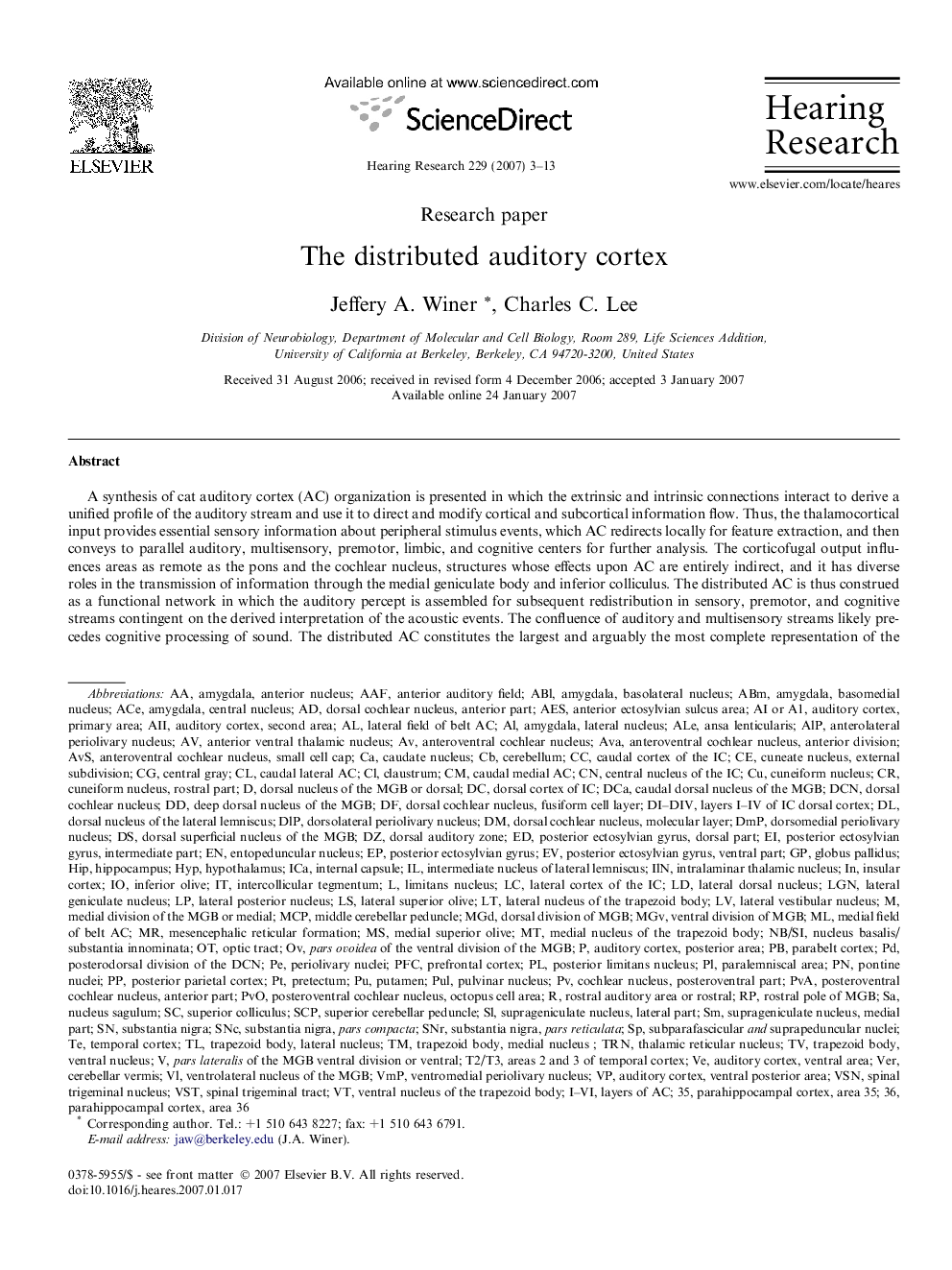| Article ID | Journal | Published Year | Pages | File Type |
|---|---|---|---|---|
| 4356257 | Hearing Research | 2007 | 11 Pages |
A synthesis of cat auditory cortex (AC) organization is presented in which the extrinsic and intrinsic connections interact to derive a unified profile of the auditory stream and use it to direct and modify cortical and subcortical information flow. Thus, the thalamocortical input provides essential sensory information about peripheral stimulus events, which AC redirects locally for feature extraction, and then conveys to parallel auditory, multisensory, premotor, limbic, and cognitive centers for further analysis. The corticofugal output influences areas as remote as the pons and the cochlear nucleus, structures whose effects upon AC are entirely indirect, and it has diverse roles in the transmission of information through the medial geniculate body and inferior colliculus. The distributed AC is thus construed as a functional network in which the auditory percept is assembled for subsequent redistribution in sensory, premotor, and cognitive streams contingent on the derived interpretation of the acoustic events. The confluence of auditory and multisensory streams likely precedes cognitive processing of sound. The distributed AC constitutes the largest and arguably the most complete representation of the auditory world. Many facets of this scheme may apply in rodent and primate AC as well. We propose that the distributed auditory cortex contributes to local processing regimes in regions as disparate as the frontal pole and the cochlear nucleus to construct the acoustic percept.
